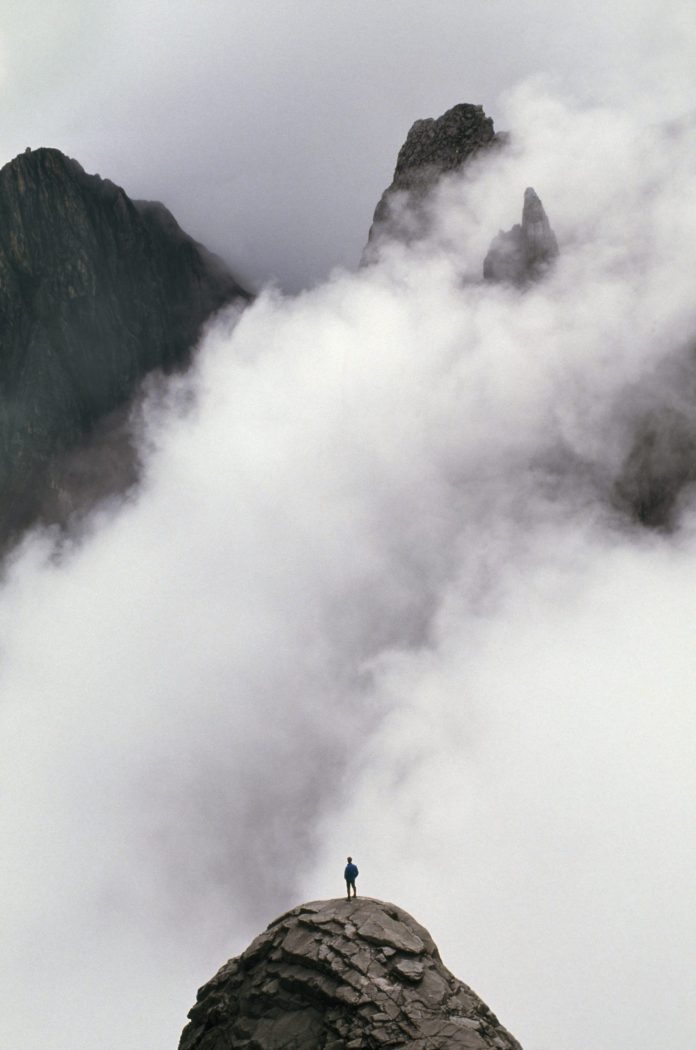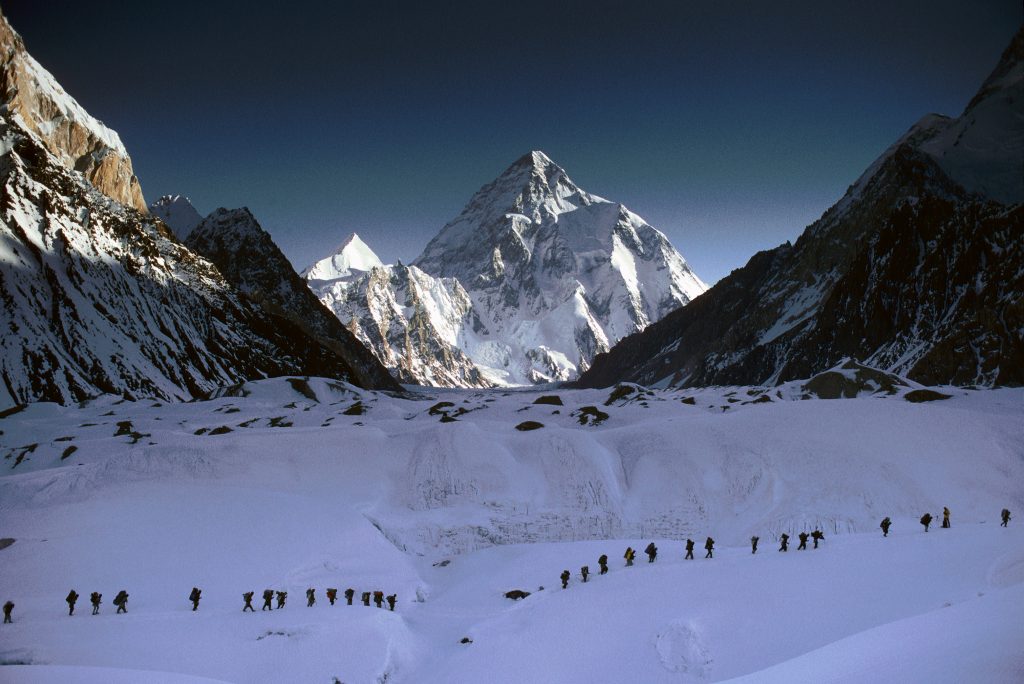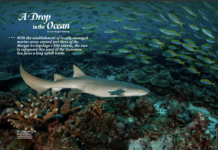
An alternative measure of mountain height
Text YD Bar-Ness
To anyone interested in the geography of the Earth, mountains are a good place to start. Most maps of the planet show the highest points – the mountains that reach highest into the sky. By memorising their altitudes, the geographer can gain a basic knowledge of the continents – Asia and South America soaring into the heavens, and Australia, far below.
But to the mapmaker, geologist and mountaineer, there is another measure of a mountain – prominence. This is the height difference from a specific summit and the nearest low point that separates it from any other summit. In other words, it is measured down from the summit to the nearest saddle, also known as the “key col” (from the French word for “neck”, similar to “collar”).
If you imagined the ocean slowly rising high into the mountains, each mountain summit would eventually become isolated into its own island when the key col is flooded. At the point when that happens, the height of that new island above sea level is equal to its prominence.
Of course, prominence is a simple linear measure and is not necessarily an exact determinant of the difficulty of a particular mountain climb. But it does give an alternate metric with which to understand the terrain of Earth.
The number of metres of prominence will be much higher for an isolated volcano arising from a flat plain, and much less for a peak that is merely a high point on a plateau. The highest point on a continent or an island will be the most prominent mountain – so Mount Everest (8,848 metres altitude, 8,848 metres prominence) is the most prominent peak for all of the landmass of Africa and Eurasia.
The key col between two prominent mountains might be very distant – the key col for Mont Blanc (4,808 metres altitude, 4,695 metres prominence) in the European Alps is at 113 metres in Northwestern Russia, where it is divided from Mount Everest. The key col for the North America high point, the Alaskan Denali (Mount McKinley, 6,194 metres altitude, 6,138 metres prominence) is naturally at 65 metres in Nicaragua (not counting the Panama Canal). At this key col, it is separated from the South American high point, Aconcagua, the world’s second most prominent peak (6,962 metres altitude, 6,962 metres prominence).

Everest, Aconcagua, Denali and Kilimanjaro (5,895 metres altitude, 5,885 metres prominence) are the world’s four most prominent mountains. Each is the monarch of their own continent. However, because of the low-lying links between the Americas and Africa-Asia, Denali is, mathematically speaking, a bump on a ridge of Aconcagua, and Kilimanjaro is a bump on a ridge of Everest.
Because both Everest and Aconcagua are the high points of the Afro-Eurasian and American landmasses, their prominence is equivalent to their altitude. What about the other island high points? The summits of islands are also the only peaks on that landmass that have a prominence equal to their altitude. In Antarctica, Vinson Massif rises 4,892 metres in altitude, and is the eighth most prominent peak on Earth.
Each island has its own high point, the most notable being Indonesia’s Puncak Taya (4,884 metres), Hawaii’s Mauna Kea (4,205 metres), Borneo’s Mount Kinabalu (4,095 metres), Japan’s Fuji (3,776 metres) and New Zealand’s Mount Cook (3,724 metres). Far lower down the list, Australia’s Mount Kosciusko (2,228 metres) is the lowest of the continental high points. As the oceans rise, these island high points will lose both prominence and altitude.
On the landmasses, the most prominent mountains are not always the tallest. In North America, Mount Rainier (4,393 metres altitude, 4,023 metres prominence, the world’s 21st most prominent) is a notable volcano that rises up dramatically from sea level. Amazingly, it is more prominent than the world’s second tallest mountain, K2 (8,611 metres altitude, 4,017 metres prominence).
According to the extensive analysis of mountain prominence published by Aaron Maizlish at www.peaklist.org, there are 1,524 “ultra-prominent” peaks on Earth that have a prominence greater than 1,500 metres, half of which are on the Eurasian landmass. China, Canada, and the US – all countries with extensive histories of glaciation – have the most ultra-prominent peaks. The ultra-prominent mountains are most concentrated in the ice-carved Karakoram Range spread over India, China and Pakistan.
A related concept to prominence is vertical relief. Relief is a more generic description of the vertical differences in a region, and can include deep canyons, gorges and craters. For example, the regions of the Grand Canyon in the US and the Blue Mountains in Australia have deep relief from the sharp cutting of water into the sandstone plateaux to form a gorge.
The study of terrestrial prominence can also make different mathematical assumptions as to whether to include the oceans and glacial ice. If one considers the ocean and oceanic trenches as a key col, then the mathematics changes. Vertical relief under the oceans is measured by depth surveys in the study of bathymetry. There are ultra-prominent mountains such as the stratovolcano Mauna Kea (9,330 metres prominence to the key col underneath the ocean surface) and chasms with phenomenally deep relief such as Challenger Deep (10,911 metres deep). From the bottom of Challenger Deep to the summit of Everest is 19,761 metres – the total vertical relief of planet Earth.
Mountain climbers have long been aware of prominence, and it instinctively measures into the sense of a climb’s difficulty. Which is the greater achievement: to take a ski lift or a road onto a high mountain plateau and then to walk a hundred metres up onto a 4,000-metre summit, or to walk from the beach to the top of an island 200 metres high?
Understanding prominence and relief helps to appreciate the forces and the geology of the landscapes. The mathematics of summits, relief and key cols bring a new dimension to the geography of mountains, hills and canyons – and offers a new vocabulary for charting the Earth’s most extreme places.
For more stories and photos, check out Asian Geographic Issue 114.










